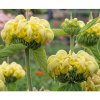bigsulcata
New Member
Hello!
I’m new to the forums, but have had my Sulcata for almost 20 years. She’s a pretty big girl and loves to roam. I recently moved to a new house and the yard has all safe plants for Sulcatas except there is one flower bush I cannot find any information on the internet about its health for a tortoise. Has anyone had experience with this bush or know any more information about toxicity?
The flower bush in question is Leonotis leonurus, also known as lion's tail, lion’s ear, and wild dagga. From wikipedia, it’s a plant species in the mint family. The plant is a broadleaf evergreen large shrub native to South Africa, where it is very common. It is also smoked by some tribes for slight psychoactive effects too.


There is only one bush in the yard and she will be roaming around that area a lot, so I want to make sure the plant is not toxic for her at all. It grows a lot of flowers in the summer, but it doesn’t shed much.
Thanks in advance for any help. Looking forward to talking more on the site!
Best,
Mike
I’m new to the forums, but have had my Sulcata for almost 20 years. She’s a pretty big girl and loves to roam. I recently moved to a new house and the yard has all safe plants for Sulcatas except there is one flower bush I cannot find any information on the internet about its health for a tortoise. Has anyone had experience with this bush or know any more information about toxicity?
The flower bush in question is Leonotis leonurus, also known as lion's tail, lion’s ear, and wild dagga. From wikipedia, it’s a plant species in the mint family. The plant is a broadleaf evergreen large shrub native to South Africa, where it is very common. It is also smoked by some tribes for slight psychoactive effects too.


There is only one bush in the yard and she will be roaming around that area a lot, so I want to make sure the plant is not toxic for her at all. It grows a lot of flowers in the summer, but it doesn’t shed much.
Thanks in advance for any help. Looking forward to talking more on the site!
Best,
Mike
